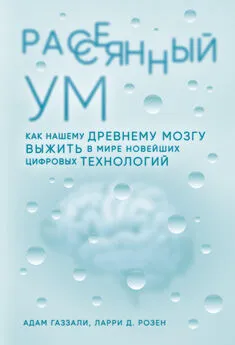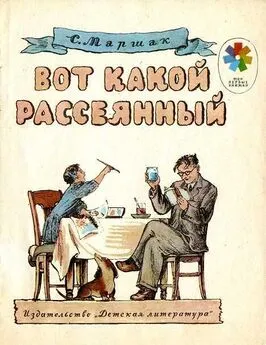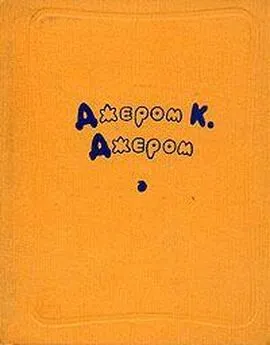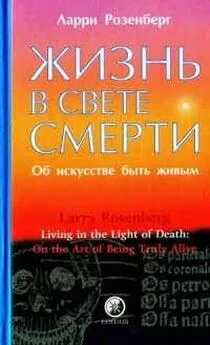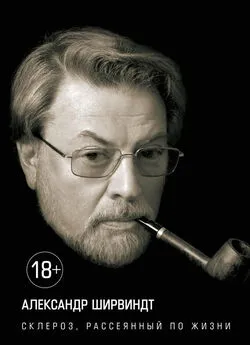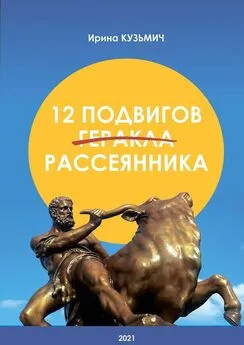Ларри Розен - Рассеянный ум
- Название:Рассеянный ум
- Автор:
- Жанр:
- Издательство:Литагент 5 редакция «БОМБОРА»
- Год:2019
- Город:Москва
- ISBN:978-5-04-097621-8
- Рейтинг:
- Избранное:Добавить в избранное
-
Отзывы:
-
Ваша оценка:
Ларри Розен - Рассеянный ум краткое содержание
Рассеянный ум - читать онлайн бесплатно ознакомительный отрывок
Интервал:
Закладка:
M. H. Cassini, A. Kacelnik, and E. T. Segura, “The Tale of the Screaming Hairy Armadillo, the Guinea Pig, and the Marginal Value Theorem,” Animal Behavior 39, no. 6 (1990: 1030–1050; R. J. Cowie, “Optimal Foraging in the Great Tits ( Parus Major ),” Nature 268 (1977): 137–139.
24
Pirolli and Card, “Information Foraging”; T. Hills, P. M. Todd, and R. L. Goldstone, “Priming and Conservation between Spatial and Cognitive Search,” in Proceedings of the 29th Annual Cognitive Science Society (Austin: Cognitive Science Society, 2007), 359–364; P. E. Sandstrom, “An Optimal Foraging Approach to Information Seeking and Use,” Library Quarterly (1994): 414–449; M. Dwairy, A. C. Dowell, and J. C. Stahl, “The Application of Foraging Theory to the Information Searching Behavior of General Practitioners,” BMC Family Practice , 12, no. 1 (2011): 90.
25
R. Marois and J. Ivanoff, “Capacity Limits of Information Processing in the Brain,” Trends in Cognitive Sciences 9, no. 6 (2005): 296–305.
26
J. M. Fuster, “Upper Processing Stages of the Perception-Action Cycle,” Trends in Cognitive Sciences 8, no. 4 (2004): 143–145.
27
Термин «цикл восприятия/действия» был введен и популяризован Хоакином Фустером, но концепция Упоминалась несколькими другими учеными, начиная с 1950 года. See J. M. Fuster, The Prefrontal Cortex , 2nd ed. (New York: Raven Press, 1989); J. M. Fuster, Cortex and Mind: Unifying Cognition (Oxford: Oxford University Press, 2003).
28
Подколенный рефлекс можно точнее описать как рефлекс ощущения/действия, так как головной мозг не принимает участия в процессе.
29
F. L. Coolidge and T. Wynn, “Executive Functions of the Frontal Lobes and the Evolutionary Ascendancy of Homo Sapiens,” Cambridge Archeological Journal 11, no. 2 (2001): 255–260.
30
N. J. Emery and N. S. Clayton, “The Mentality of Crows: Convergent Evolution of Intelligence in Corvids and Apes,” Science 306, no. 5703 (2004): 1903–1907.
31
Quoted material in this paragraph is from Charles Sabine, “Senses Helped Animals Survive the Tsunami,” NBC News with Brian Williams, http://www.nbcnews.com/id/6795562/ns/nbc_nightly_news_with_brian_williams/t/senses-helped-animals-survive-tsunami.
32
National Highway Traffic Safety Administration and Virginia Tech Transportation Institute, “Breakthrough Research on Real-World Driver Behavior Released,” April 20, 2006, http://www.nhtsa.gov/Driving+Safety/Distracted+Driving+at+Distraction.gov/Breakthrough+Research+on+Real-World+Driver+Behavior+Released.
33
William James, Principles of Psychology (New York: Holt, 1890), 404.
34
S. J. Luck and S. P. Vecera, “Attention,” in Stevens’ Handbook of Experimental Psychology , vol. 1: Sensation and Perception , ed. H. Pasher and S. Yantis (New York: John Wiley, 2002), 235–286.
35
A. Baddeley, Working Memory (Oxford: Oxford University Press, 1986).
36
A. Gazzaley and A. C. Nobre, “Top-Down Modulation: Bridging Selective Attention and Working Memory,” Trends in Cognitive Sciences 16, no. 2 (2012): 129–135.
37
D. Premack, “Human and Animal Cognition: Continuity and Discontinuity,” Proceedings of the National Academy of Sciences of the United States of America 104, no. 35 (2007): 13861–13867.
38
A. Gazzaley and M. D’Esposito, “Unifying Prefrontal Cortex Function: Executive Control, Neural Networks, and Top-Down Modulation,” in The Human Frontal Lobes , ed. B. Miller and J. Cummings (New York: Guilford, 2007).
39
G. Fritsch and E. Hitzig, “Uber die elektrische Erregbarkeit des Grosshiirns,” Archiv der Anatomie, Physiologie und Wissenschaftlichen Medizin 37 (1870): 300–332.
40
B. J. Baars and N. M. Gage, Cognition, Brain, and Consciousness: Introduction to Cognitive Neuroscience (New York: Academic Press, 2010).
41
A. M. Glenberg, J. L. Schroeder, and D. A. Robertson, “Averting the Gaze Disengages the Environment and Facilitates Remembering,” Memory and Cognition 26 (1998): 651–658.
42
P. E. Wais, M. T. Rubens, J. Boccanfuso, and A. Gazzaley, “Neural Mechanisms Underlying the Impact of Visual Distraction on Retrieval of Long-Term Memory,” Journal of Neuroscience 30, no. 25 (2010): 8541–8550.
43
H. J. Bigelow, “Dr. Harlow’s Case of Recovery from the Passage of an Iron Bar through the Head,” American Journal of the Medical Sciences 16, no. 39 (1850): 13–22. See also the Phineas Gage Information Page at http://www.uakron.edu/gage.
44
H. Damasio, T. Grabowski, R. Frank, A. M. Galaburda, and A. R. Damasio, “The Return of Phineas Gage: Clues about the Brain from the Skull of a Famous Patient,” Science 264, no. 5162 (1994): 1102–1105.
45
Harlow, “Recovery from the Passage of an Iron Bar through the Head”; reprinted as J. M. Harlow, Recovery from the Passage of an Iron Bar through the Head (Boston: David Clapp & Son), 13.
46
G. A. Mashour, E. E. Walker, and R. L. Martuza, “Psychosurgery: Past, Present, and Future,” Brain Research Reviews 48, no. 3 (2005): 409–419.
47
W. Freeman and J. W. Watts, “Physiological Psychology,” Annual Review of Physiology 6, no. 1 (1944): 517–542.
48
W. Freeman and J. W. Watts, “Physiological Psychology”.
49
A. L. Benton, “Differential Behavioral Effects in Frontal Lobe Disease,” Neuropsychologia 6, no. 1 (1968): 53–60; A. R. Luria, Human Brain and Psychological Processes (New York: Harper & Row, 1968); B. Milner, “Effects of Different Brain Regions on Card Sorting,” Archives of Neurology 9 (1963): 90–100.
50
P. T. Schoenemann, M. J. Sheehan, and L. D. Glotzer, “Prefrontal White Matter Volume Is Disproportionately Larger in Humans Than in Other Primates,” Nature Neuroscience 8, no. 2 (2005): 242–252.
51
A. Gazzaley and M. D’Esposito, “Neural Networks: An Empirical Neuroscience Approach toward Understanding Cognition,” Cortex 42, no. 7 (2006): 1037–1040.
52
J. van Whye, “The History of Phrenology on the Web” (2004), http://www.historyofphrenology.org.uk/.
53
E. A. Berker, A. H. Berker, and A. Smith, “Translation of Broca’s 1865 Report: Localization of Speech in the Third Left Frontal Convolution,” Archives of Neurology 43, no. 10 (1986): 1065–1072.
54
R. M. Sabbatini, “Phrenology: The History of Brain Localization,” Brain and Mind 1 (1997), http://www.cerebromente.org.br/n01/frenolog/frenologia.htm.
55
B. Tizard, “Theories of Brain Localization from Flourens to Lashley,” Medical History 3 (1959): 132–145.
56
J. M. Fuster, Cortex and Mind: Unifying Cognition (Oxford: Oxford University Press, 2003).
57
M. Mesulam, “A Cortical Network for Directed Attention and Unilateral Neglect,” Annals of Neurology 10, no. 4 (1981): 309–325.
58
Gazzaley and D’Esposito, “Unifying Prefrontal Cortex Function.”
59
A. Gazzaley, J. W. Cooney, K. McEvoy, R. T. Knight, and M. D’Esposito, “Top-Down Enhancement and Suppression of the Magnitude and Speed of Neural Activity,” Journal of Cognitive Neuroscience 17, no. 3 (2005): 507–517.
60
E. K. Miller and J. D. Cohen, “An Integrative Theory of Prefrontal Cortex Function,” Annual Review of Neuroscience 24, no. 1 (2001): 167–202.
61
Левое полушарие мозга отображает правостороннее видение мира, поэтому зрительная кора правого полушария соответствует левостороннему зрительному полю, куда направлено внимание нашего предка.
62
Gazzaley et al., “Top-Down Enhancement.”
63
J. Z. Chadick, T. P. Zanto, and A. Gazzaley, “Structural and Functional Differences in Medial Prefrontal Cortex Underlie Distractibility and Suppression Deficits in Ageing,” Nature Communications 5 (2014): 4223.
64
J. Rissman, A. Gazzaley, and M. D’Esposito, “Measuring Functional Connectivity during Distinct Stages of a Cognitive Task,” Neuroimage 23, no. 2 (2004): 752–763.
65
A. Gazzaley, J. Rissman, and M. D’Esposito, “Functional Connectivity during Working Memory Maintenance,” Cognitive, Affective, and Behavioral Neuroscience 4, no. 4 (2004): 580–599.
66
T. P. Zanto, M. T. Rubens, A. Thangavel, and A. Gazzaley, “Causal Role of the Prefrontal Cortex in Top-Down Modulation of Visual Processing and Working Memory,” Nature Neuroscience 14, no. 5 (2011): 656–661.
67
C. F. Jacobsen, “Studies of Cerebral Function in Primates,” Comparative Psychology Monographs 13 (1938): 1–68.
68
J. M. Fuster and G. E. Alexander, “Neuron Activity Related to Short-Term Memory,” Science 173, no. 3997 (1971): 652–654; K. Kubota and H. Niki, “Prefrontal Cortical Unit Activity and Delayed Alternation Performance in Monkeys,” Journal of Neurophysiology 34 (1971): 337–347.
69
P. S. Goldman-Rakic, “Cellular Basis of Working Memory,” Neuron 14, no. 3 (1995): 477–485.
70
J. M. Fuster, R. H. Bauer, and J. P. Jervey, “Functional Interactions between Inferotemporal and Prefrontal Cortex in a Cognitive Task,” Brain Research 330, no. 2 (1985): 299–307.
71
P. E. Dux, J. Ivanoff, C. L. Asplund, and R. Marois, “Isolation of a Central Bottleneck of Information Processing with Time-Resolved fMRI,” Neuron 52, no. 6 (2006): 1109–1120.
72
P. E. Dux, J. Ivanoff, C. L. Asplund, and R. Marois, “Isolation of a Central Bottleneck of Information Processing with Time-Resolved fMRI,” Neuron 52, no. 6 (2006): 1109–1120.
73
R. Kanai, M. Y. Dong, B. Bahrami, and G. Rees, “Distractibility in Daily Life Is Reflected in the Structure and Function of Human Parietal Cortex,” Journal of Neuroscience 31, no. 18 (2011): 6620–6626.
Читать дальшеИнтервал:
Закладка:
